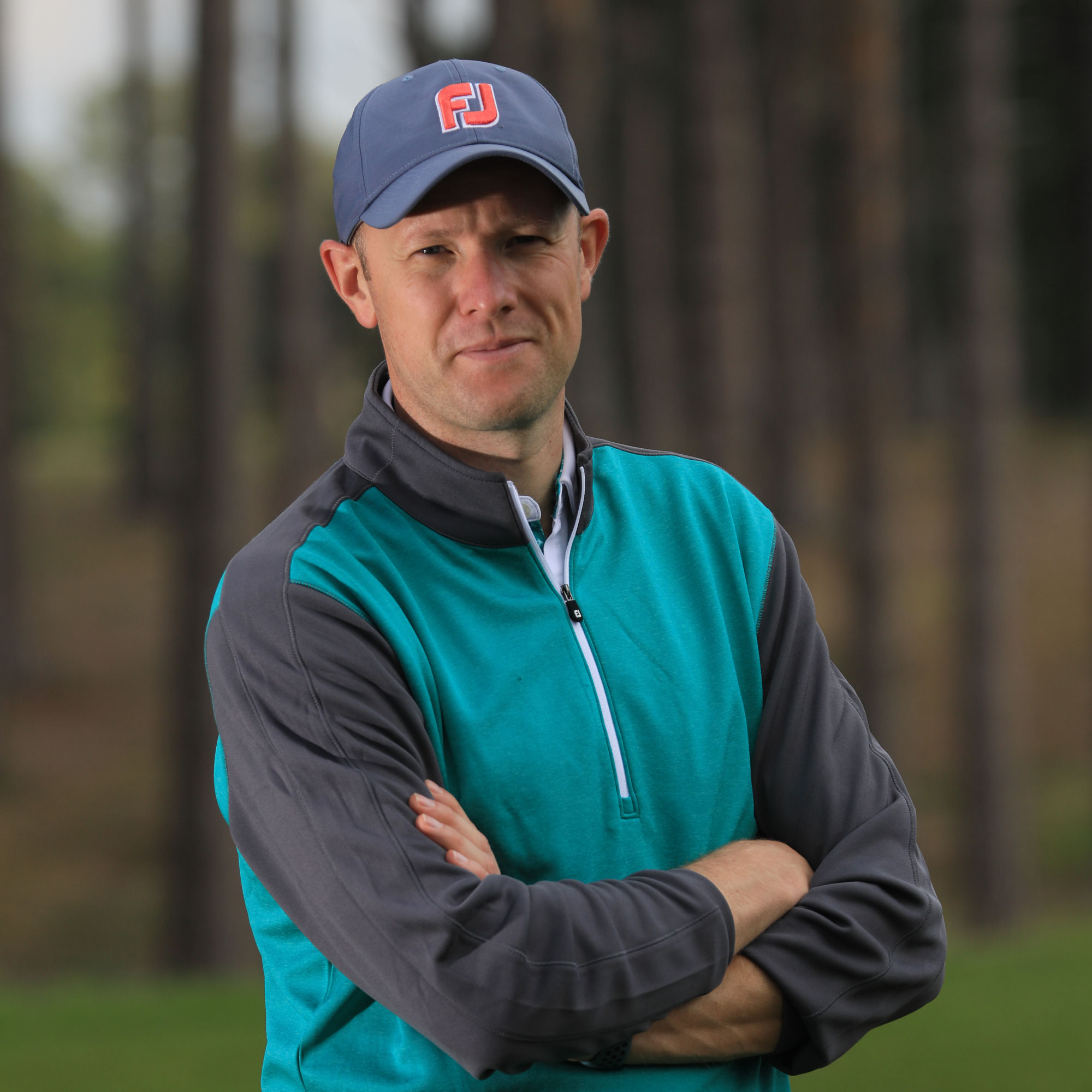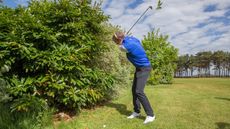Inside The Callaway Tour Truck


The Callaway Tour Truck travels the world providing support to Callaway's team of Tour professionals. In this exclusive feature we look at what happens inside
Tell us about your role on the Callaway Tour Truck
My part of the business is on the Tour side, looking after the players and making sure that from an equipment standpoint, they have everything they need to go out there and play their best golf. Of course, this vehicle is a huge part of that. We get the van to pretty much all of the European Tour events. From a personal perspective, I do some of the events at the start of the year in South Africa and the Middle East, but my job is to manage the van, working out the logistics and ordering product.
The Callaway Tour truck is set up in three sections, not including the driver’s cabin itself! There is a conference suite at the front that acts as a business hub. This is where players and managers can meet with Callaway executives, or watch Sky TV and use the internet. Then there is the reception area where the players each have their own locker that stores all of the players’ soft goods for the week – things like caps, gloves and towels. Lots of the players are superstitious and a popular request is not wanting to play a number three ball, usually because they hate the idea of three putting! Finally, at the back of the van you’ll find the workshop where we have everything we need to build or adjust the clubs we give to the players.
We do a lot of work tracking performance of our players. If they’re getting better, why are they getting better? We’ll talk to caddies, managers and coaches as well as the player himself to find out what he’s doing to improve. Knowing these things is important to knowing what specification would best suit that player.
What’s the strangest request you’ve had?
Get the Golf Monthly Newsletter
Subscribe to the Golf Monthly newsletter to stay up to date with all the latest tour news, equipment news, reviews, head-to-heads and buyer’s guides from our team of experienced experts.
The strangest request I’ve ever had was at the Open at Carnoustie, when Nick Faldo split his thumbnail and asked me to glue it back together. That was probably the most nerve-wracking job I’ve had to do, I certainly didn’t want to glue all of his fingers together.
The other really unusual jobs we do are to create training aids for Pete Cowen or some of the players. For instance, we might build a club that is 10 inches shorter than usual. A 48˚ wedge that is 23 inches long so they can swing it in their hotel room. In this instance, we’d fill the head with aluminium oxide, get as much lead tape as we can on there and put a big weight in the butt end of the club so it feels right to swing with. Hopefully, the glue we put in holds and the clubhead doesn’t go flying out of the window on the 15th floor of the Hilton!
What’s the busiest part of a tournament week?
Our busiest time of the week tends to be a Tuesday, as we try to meet all the requests that have come into us before the tournament. During that period it’s a bit like a chef’s kitchen in here – organised chaos! The orders get shouted down the room and if you aren’t concentrating, mistakes can happen. So to help, above the worktops we have a quick reference guide for each of our players. These just tell us some of the key measurements and preferences so that we can build clubs as accurately and quickly as possible. For instance, we have players who don’t have the same grip on each club, or they might have varying amounts of tape on different clubs. One that springs to mind is Kristoffer Broberg who has ribbed grips on his wedges but on his woods, hybrids and irons he has round grips that are reversed. The last thing you’d want to do under pressure would be to put a ribbed grip on upside down because that would make the club non-conforming.
What are the differences between what the players use and what we can buy?
The differences would be very small, if any. Looking at Alex Noren’s irons, these would be exactly as what you were able to buy. The only difference in terms of irons would be that some guys’ clubs need the shafts slightly longer, and so I would order in some heads that are eight grams lighter. So when I put a shaft in that’s an inch longer than standard, the swing weight is still D3. Similarly with the wedges I order in heads that are slightly heavier because different players like different sole grinds. This means we can grind down the sole and still have the optimum weight. Finally, the shafts that we offer to players might be a little different. The shaft producers manufacture to tight tolerances, but they will often hand sort the ones we receive on tour to be sure that a 70-gram shaft is exactly spot on. That’s just a tolerance thing, trying to make them as tight as possible.
What’s the process of getting a player like Alex Noren into a new driver?
Well we know everything about his previous model – length, loft, flex, centre of gravity. So we will get the product ahead of the player and build up a few different versions and the specs we build here will depend on what the new product is designed to do. From there it can be logistically challenging depending on the time of year as the players can be all over the world. We will send out a few versions to the player that will be about right, and after that we’ll go through the fitting process from there.
33,400 The weight of the truck in kilos
4,500 grips carried on board
| 2,100 |
shafts carried on board
| 650 |
litres of diesel carried on board
| 15 |
minutes. The time it would take for the technicians to build a Big Bertha driver
600 white gloves

In July 2023, Neil became just the 9th editor in Golf Monthly's 112-year history. Originally working with the best coaches in the UK to produce instruction content, he has also presented many Golf Monthly videos looking at all areas of the game from Tour player interviews to the rules of golf.
Throughout his time with the brand he has also covered equipment launches that date back well over a decade. He clearly remembers the launch of the Callaway and Nike square drivers as well as the white TaylorMade driver families, such as the RocketBallz! If you take a look at the Golf Monthly YouTube channel, you'll see his equipment videos dating back over a decade! He has also conducted 'What's In The Bag' interviews with many of the game's best players like Rory McIlroy, Dustin Johnson and Jon Rahm. Over the years, Neil has tested a vast array of products in each category and at drastically different price-points.
Neil is currently playing: Driver: TaylorMade Stealth Plus Fairway Wood: Titleist TSR2 Hybrid: Titleist TS3 Irons: PING Blueprint S (4&5), PING Blueprint T (6-PW) Wedges: Titleist Vokey SM7 50˚, 54˚, 60˚ Putter: Odyssey Triple Track Ten Ball: Titleist Pro V1X
-
 LIV Golf Pro On Verge Of PGA Championship Start Teeing It Up At Saudi Open
LIV Golf Pro On Verge Of PGA Championship Start Teeing It Up At Saudi OpenOne LIV Golf star hopes to continue his excellent Asian Tour form at the Saudi Open as he bids for a maiden PGA Championship start
By Mike Hall Published
-
 What Happens If You Knock Leaves Off A Tree Or Bush During Your Stroke?
What Happens If You Knock Leaves Off A Tree Or Bush During Your Stroke?You're close to or in amongst the foliage and knock leaves off a tree as you make your swing... what do the Rules of Golf say?
By Jeremy Ellwood Published